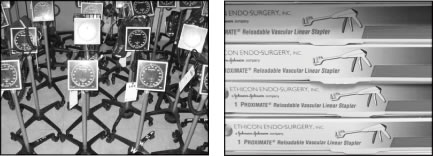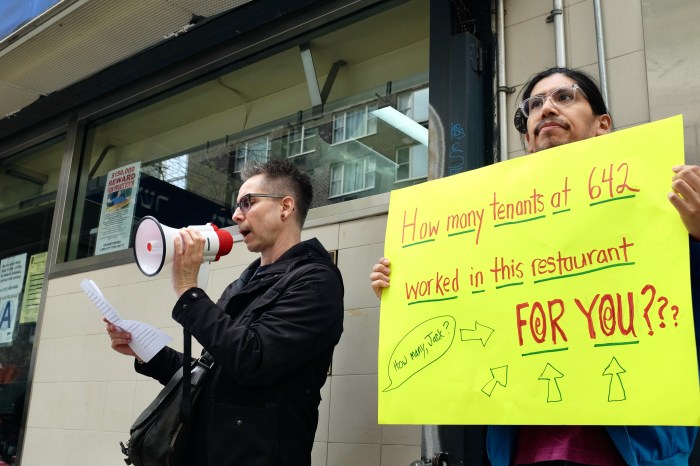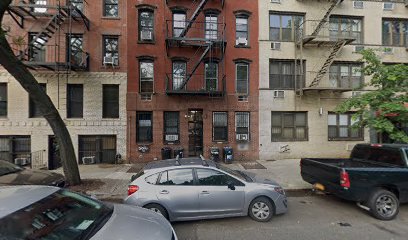By Lincoln Anderson
Auction is bidder
end for historic
Village hospital
From bedpans to X-ray machines — everything must go!
Sphygmomanometers, reloadable vascular staplers, cryo microtomes, fibrinotherms — you name it, they’ve got it.
By order of the U.S. Bankruptcy Court, a four-day auction of the entire contents of St. Vincent’s kicked off Tuesday morning at the former Greenwich Village hospital at 12th St. and Seventh Ave. If needed, a fifth day will be added.
The money raised by the sales will go toward helping pay off the shuttered hospital’s whopping $1 billion debt to creditors.
The auction is being conducted — on various floors throughout the hospital, as well as via Web cast — each day from 10 a.m. to about 4 p.m. or 5 p.m.
Day 1 saw lab and surgical equipment on the block. Day 2 featured radiology, cardiology, anesthesia and labor-and-delivery equipment, plus beds and stretchers. The defunct facility’s Day 3 offerings were slated to include the emergency room’s contents, physical therapy equipment and, according to the online brochure, a “FULL WAREHOUSE OF CATHETERS, OR SUPPLIES, SUTURES AND SO MUCH MORE IT IS IMPOSSIBLE TO LIST!!” Scheduled for bidding on Friday, Day 4, were cafeteria equipment, computers, vehicles — including four, fully equipped Ford ambulances (with 32,000 to 89,000 miles on them) — and the hospital’s backup generator.
It was expected that about 80 to 100 lots of items would be sold per hour, and 1,200 to 1,300 lots per day.
A St. Vincent’s spokesperson said the auction location was not open to the press. She said she couldn’t predict or give a ballpark figure as to how much money the sale of the hospital’s contents would raise.
The medical sell-fest was touted by ads stating, “State-of-the-art 500-bed facility! Equipment as new as 2010!”
But Eileen Dunn, a former longtime St. Vincent’s nurse who is on the board of the New York State Nurses Association, said not to believe the hype.
“That’s all junk — beds that don’t work, I-med [intravenous] pumps that don’t work,” she said. Dunn recalled that during the hospital’s first bankruptcy, the place was so under-equipped that staff members didn’t even have insulin needles during overnight shifts, and would have to go to the drug store to buy them.


















